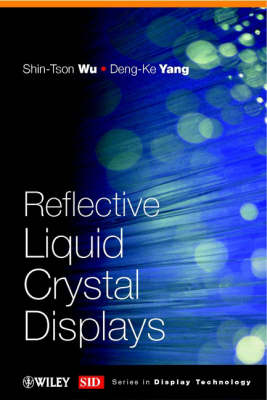Wiley Series in Display Technology
3 total works
From laptop computers and mobile phones to digital cinema, Liquid Crystal Displays (LCDs) are integral components in an increasing array of highly desirable consumer electronics and communication devices, and are already the predominant technology used in flat panel displays. This inter-disciplinary book is intended as an introductory guide to the fundamental properties of liquid crystals and their applications in display and photonic devices, providing a basic understanding of the physics, optics, electro-optics, and material aspects for state-of-the-art display and photonic devices. Fundamentals of Liquid Crystal Devices includes:* A comprehensive overview of LCDs including liquid crystal physics, electro-optical properties, simulation techniques and display and photonic applications.* Numerous examples and case studies, solved problems and challenging homework conundrums starting with basic physics and gradually introducing advanced device concepts and structures.* The principles for designing advanced specialist transmissive, reflective, and transflective liquid crystal displays.*
Chapters on emerging technologies such as tuneable liquid crystal photonic devices including laser beam steering, light switches for telecommunication and tunable-focus lenses. Fundamentals of Liquid Crystal Devices is a valuable resource for advanced undergraduate and graduate students following display systems courses, who will benefit from its systematic approach. The introduction of advanced device concepts and structures means that display engineers, scientists, and technicians active in the field can also utilise this unique resource, as can developers of a wide range of systems and applications.
Chapters on emerging technologies such as tuneable liquid crystal photonic devices including laser beam steering, light switches for telecommunication and tunable-focus lenses. Fundamentals of Liquid Crystal Devices is a valuable resource for advanced undergraduate and graduate students following display systems courses, who will benefit from its systematic approach. The introduction of advanced device concepts and structures means that display engineers, scientists, and technicians active in the field can also utilise this unique resource, as can developers of a wide range of systems and applications.
Current and future applications of reflective LCDs (Liquid Crystal Displays) technology include communication, transportation, instrumentation and military equipment. Reflective liquid crystal display is a fast growing field owing to its high brightness, low power consumption and portability. The authors give an overview of state-of-the-art reflective LCD technology describing the basic operations principles for engineers. The book presents a detailed analysis of the basic operation principles of all the various mechanisms involved in reflective LCD devices; focuses on LCD materials with an extensive discussion of how they can be incorporated into the various configurations for transmissive and reflective applications; and a number of the topics covered are also applicable to all (not just reflective) LCD displays.
The objective of this book is to teach readers the most essential modelling techniques and methods, as well as optimization techniques for liquid crystal devices. It does not repeat the basic liquid crystal device physics discussed in other books, it uses device functions as examples and homework problems for illustrating the modelling methodologies. All the modelling methods discussed in the book are self-contained and comprehensive so that readers do not need to rely on other books. A website containing the basic modelling programs is provided with the book so that the readers can have hands-on experience.

